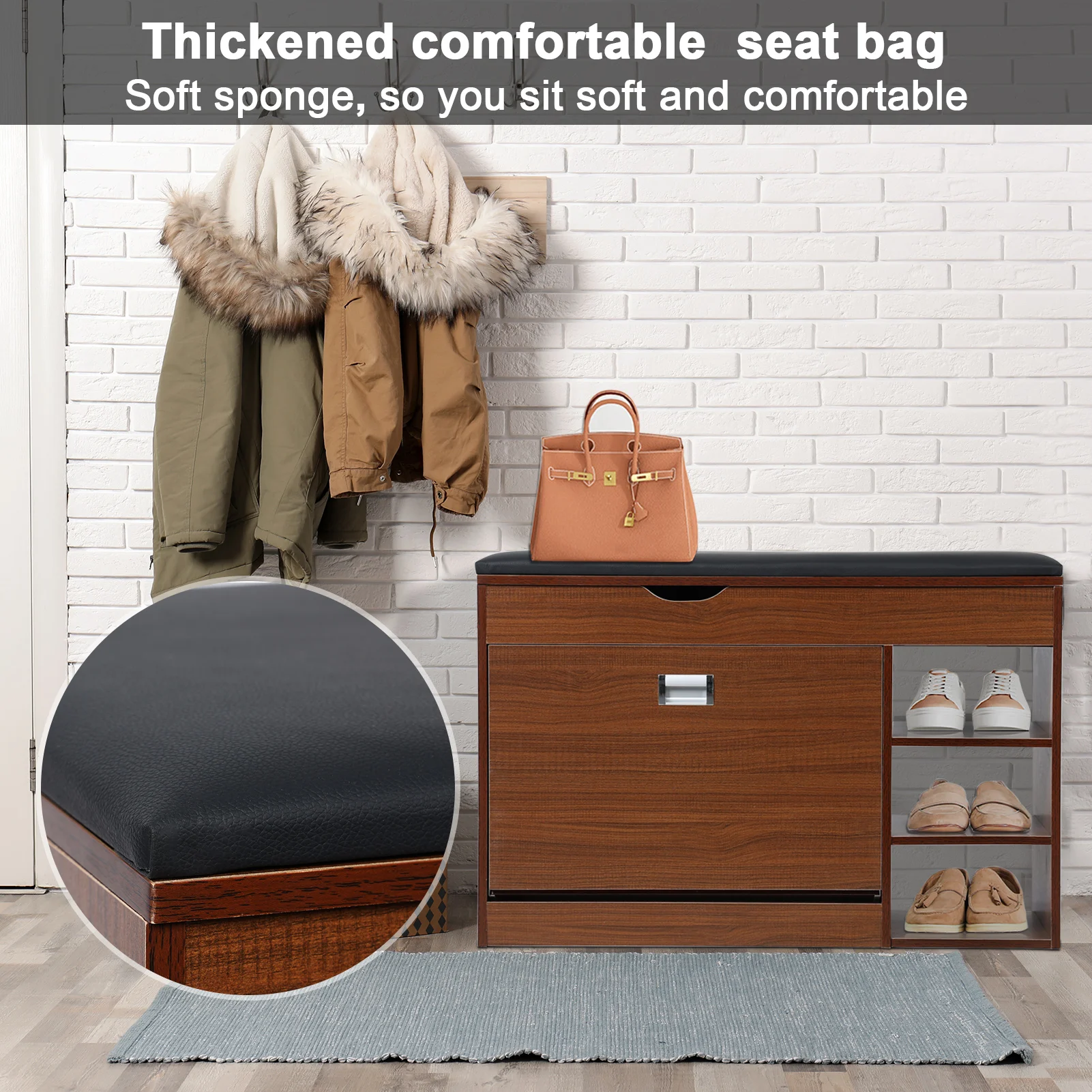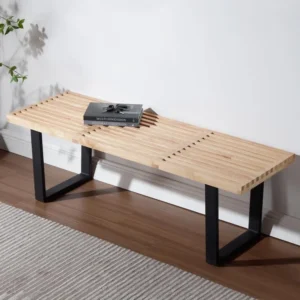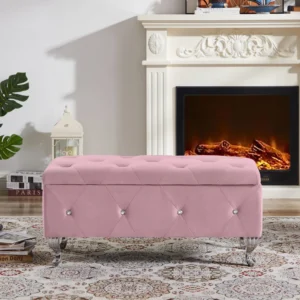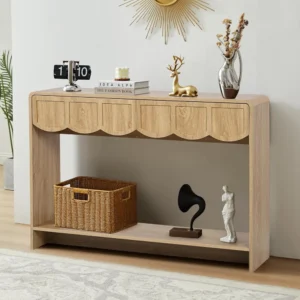Introduction to Modern Minimalist Benches
In today’s homes where space comes at a premium, the right furniture choices make all the difference between feeling cramped and feeling comfortable. Modern minimalist benches represent the perfect marriage of form and function—stripped of unnecessary details, focused on clean lines, and designed with a less-is-more approach that makes them ideal for smaller living areas.
The challenge of furnishing compact spaces often leads to frustration. Too much furniture creates clutter, while too little leaves the space feeling unfinished or impractical. Modern minimalist benches offer a strategic solution by providing essential seating without overwhelming your space. Their streamlined profiles and intentional design make them particularly valuable in apartments, condos, and smaller homes where every square foot matters.
What makes these pieces so effective? Beyond their attractive appearance, minimalist benches serve multiple purposes, optimize limited floor space, and create an enhanced sense of openness. Understanding minimalist entryway furniture guide principles helps homeowners make smarter choices for their space constraints.
As urban living becomes more common and housing footprints shrink, these versatile pieces offer practical solutions without sacrificing style—proving that limited space doesn’t have to mean limited design potential.
The Essential Benefits of Minimalist Benches in Small Living Spaces
Small spaces demand furniture that works harder, and minimalist benches deliver exceptional value through multiple benefits:
Superior Space Optimization
Unlike bulky armchairs or sofas that dominate a room, minimalist benches create an improved flow in tight quarters. Their slim profiles allow for easier movement around them, often requiring just 12-16 inches of depth while providing comfortable seating. This translates to more usable floor space and better traffic patterns—crucial in compact homes.
Impressive Multi-functionality
Modern minimalist benches excel at performing multiple duties. Beyond seating, they can serve as coffee tables, display surfaces, room dividers, or even impromptu dining spots. Minimalist benches for small entryways demonstrate how one piece can replace several individual furniture items, reducing overall footprint.
Visual Space Enhancement
The low profile and clean lines of minimalist benches create a sense of openness. Without tall backs or bulky armrests, they don’t block sightlines or light transmission through a space. This visual lightness makes rooms feel more spacious than they actually are—an optical illusion that benefits tiny apartments and narrow rooms.
Smart Storage Solutions
Many minimalist benches incorporate hidden storage compartments or open shelving beneath the seat. This storage capability helps control clutter—one of the biggest enemies of small-space living—by providing discrete places for shoes, bags, blankets, or seasonal items.
Budget-Friendly Versatility
Investing in one versatile piece rather than multiple single-purpose items saves both money and space. A well-designed minimalist bench might replace a coffee table, extra seating, and storage unit—delivering three functions for the price and footprint of one piece.
Key Design Principles of Modern Minimalist Benches
Modern minimalist benches follow specific design principles that make them both visually appealing and functionally superior for small spaces:
Clean Lines and Simple Silhouettes
The hallmark of minimalist bench design is straightforward geometry without unnecessary ornamentation. Straight edges, right angles, and occasional subtle curves create a sense of intentionality and purpose. This simplicity isn’t about being plain—it’s about achieving elegance through restraint.
Thoughtful Use of Negative Space
The space around and beneath a minimalist bench matters as much as the bench itself. Designs that incorporate negative space—like open bases or floating seats—contribute to a lighter visual impact. The best simple bench styles for minimal decor embrace this “breathing room” as part of their design language.
Neutral Color Foundations
While minimalist benches can incorporate color, they typically feature neutral palettes—whites, blacks, grays, natural woods, and earth tones. This restraint creates versatility and longevity, allowing the piece to adapt as surrounding décor changes. Subtle textures often add depth without overwhelming the visual simplicity.
Material Honesty
Quality minimalist benches showcase their materials rather than disguising them. This might mean highlighting the natural grain of wood, celebrating the industrial character of metal, or showcasing the tailored precision of upholstery. The materials themselves become the decoration through their inherent qualities.
Perfect Proportion Balance
Successful minimalist bench design relies on careful proportions. The height, width, and depth must relate harmoniously to each other while maintaining human-scale comfort. This balance between form (visual appeal) and function (practical use) is what separates thoughtful minimalist design from merely sparse furniture.
Essential Types of Modern Minimalist Benches for Limited Spaces
Storage Benches
Modern storage benches solve multiple problems in small spaces through clever design approaches:
Flip-top Storage Designs
These benches feature hinged tops that lift to reveal storage compartments. The best versions use hydraulic hinges for smooth, safe operation and maintain clean exterior lines when closed. This hidden storage keeps visual clutter at bay while providing substantial space for items like throws, pillows, or seasonal accessories.
Open-shelf Solutions
Some minimalist benches incorporate open shelving beneath the seat. This design maintains visual lightness while providing accessible storage. Popular minimalist benches with storage often feature this approach for frequently-used items like shoes or books, combining organization with display opportunities.
Drawer-integrated Options
For more structured storage, drawer benches offer compartmentalized organization while maintaining clean lines. Flush-front drawers with minimal hardware preserve the minimalist aesthetic while providing practical storage for smaller items that might otherwise create clutter.
Simple Seating Benches
When pure seating function is the priority, these streamlined options deliver:
Backless Versatility
Classic backless benches provide flexible seating that can slide under tables when not in use. With typical heights of 17-19 inches and depths of 12-16 inches, these space-efficient options can be repositioned as needed—perfect for small spaces with changing needs.
Low-profile Designs
Benches with seat heights of 16-18 inches maintain an unobtrusive presence in small rooms. By sitting lower than traditional chairs, they don’t block sightlines or light, helping maintain an open feeling even in tight quarters.
Minimalist Upholstered Options
Simple upholstered benches add comfort without bulk. Thin padding (2-3 inches) with tailored covers maintains the clean aesthetic while providing a more comfortable seating experience. These often feature removable covers for practical maintenance.
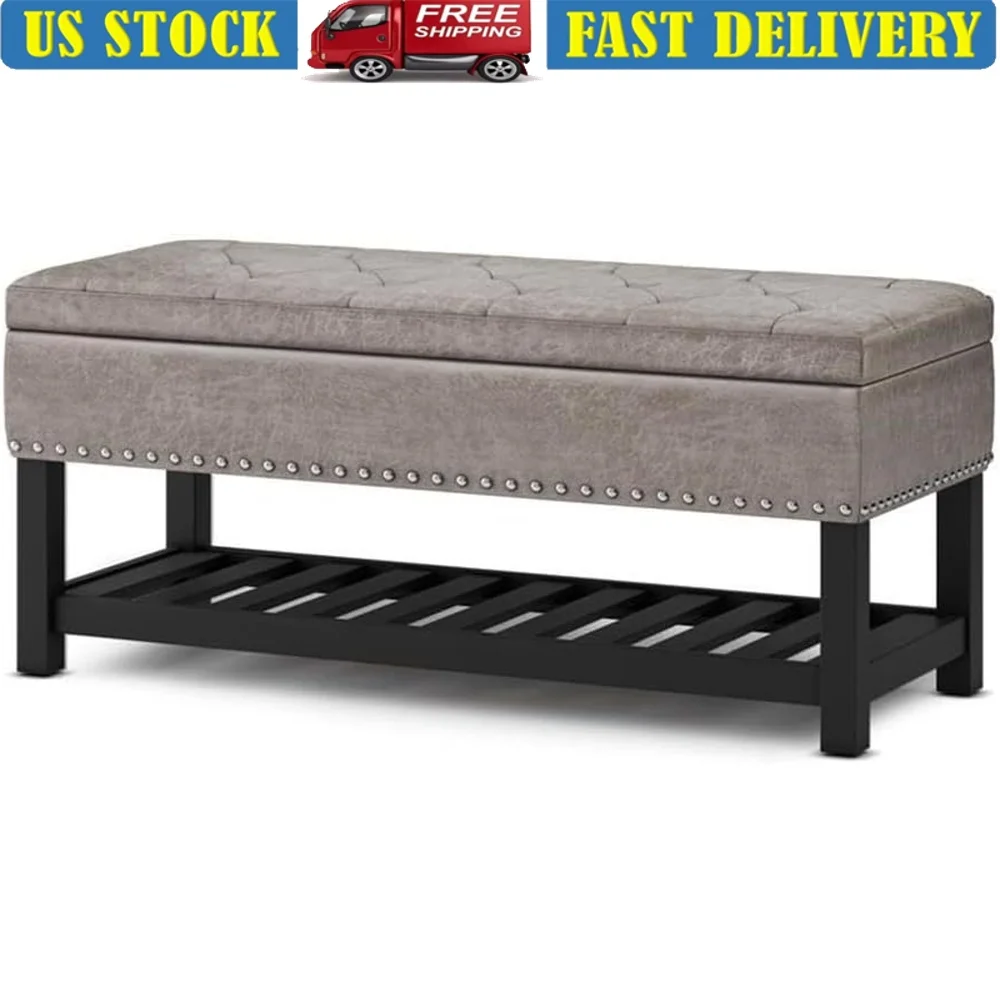
Multi-Functional Benches
The champions of small space efficiency, these designs perform multiple duties:
Bench-Table Hybrids
These clever pieces function as both seating and surfaces. With heights of 16-18 inches, they work as coffee tables that double as extra seating when guests arrive. Some feature adjustable heights to transition between functions seamlessly.
Console Benches
Specifically designed for entryways, these narrow pieces (typically 12-14 inches deep) combine seating with display surfaces for keys, mail, and decorative items. Modern storage benches for small spaces often use this approach to maximize functionality in transitional areas.
Dining Benches
Space-saving alternatives to dining chairs, these benches tuck completely under tables when not in use, eliminating the floor space needed for pushed-back chairs. They typically accommodate more people in less space than individual chairs would require.
Wall-Mounted & Floating Benches
These innovative space-savers free up valuable floor area:
Floor-free Installation
Mounted directly to wall studs, these benches eliminate leg footprints entirely. This creates usable floor space beneath and enhances cleaning access—particularly valuable in very small areas.
Visual Space Creation
The floating appearance of these benches creates the perception of more space by reducing visual weight. The clear floor beneath them extends sightlines and makes rooms appear larger than they actually are.
Structural Considerations
Quality floating benches use proper mounting hardware rated for appropriate weight capacity (typically 250-400 pounds). Installation requires finding wall studs or using appropriate anchors for safety and stability.
Nesting & Stackable Designs
For the ultimate in space efficiency:
Nested Storage
These benches feature components that fit inside one another when not in use, potentially reducing their footprint by 50% or more during storage.
Modular Flexibility
Modular bench systems can be reconfigured based on changing needs, adapting to different room arrangements or functional requirements without buying new furniture.
Premium Materials for Modern Minimalist Benches
Natural Woods
Wood remains a perennial favorite for minimalist benches, offering warmth and timeless appeal:
Solid Wood Excellence
Quality options include:
– Oak: Exceptional durability with distinctive grain patterns
– Walnut: Rich color variation that develops character over time
– Ash: Lightweight strength with excellent bend resistance
– Teak: Natural oils that resist moisture and wear
Solid wood benches offer superior longevity, often lasting decades with proper care, though they require attention to humidity changes to prevent warping.
Engineered Wood Solutions
Modern manufacturing creates engineered options like:
– Medium-density fiberboard (MDF): Consistent strength without grain issues
– Baltic birch plywood: Multiple layers for exceptional stability
– Veneered surfaces: Real wood appearance with enhanced dimensional stability
Our wood entryway bench collection showcases how these materials can be used to create beautiful yet practical pieces for small spaces.
Metal Components
Metal elements add strength and visual lightness to minimalist benches:
Framework Materials
– Steel: Exceptional strength with minimal material thickness
– Aluminum: Lightweight with natural corrosion resistance
– Powder-coated finishes: Thousands of color options with excellent durability
Industrial-inspired Elements
Hairpin legs, thin tubular frames, and wire-grid shelving maintain strength while appearing visually light—perfect for creating the illusion of space in tight quarters.
Quality Upholstery Options
Fabric choices significantly impact both comfort and aesthetics:
Performance Fabrics
– Linen: Natural texture with excellent breathability
– Boucle: Dimensional texture that hides wear patterns
– Performance velvet: Plush appearance with enhanced stain resistance
Leather Considerations
Full-grain and top-grain leather options develop beautiful patina over time while offering exceptional durability. Vegan alternatives provide similar appearance with different maintenance requirements.
Mixed Material Compositions
The most visually interesting minimalist benches often combine materials thoughtfully:
Complementary Pairings
– Wood tops with metal bases: Warmth supported by visual lightness
– Upholstered seats on architectural frames: Comfort with structural elegance
– Glass elements with solid components: Transparency that expands visual space
These combinations allow each material to showcase its strengths while compensating for limitations of other materials.
Strategic Placement: Where to Position Your Minimalist Bench
Entryway & Hallway Solutions
The entrance to your home offers perfect bench placement opportunities:
Functional Drop Zones
A narrow bench (12-14 inches deep) creates an organized landing spot for everyday items without obstructing passage. Position these pieces against walls in entryways to maximize flow while providing immediate seating for shoe changes.
Space-Conscious Dimensions
For tight hallways, consider narrow entryway bench options with depths as minimal as 10-12 inches. These slim profiles maintain walking paths while still providing essential functionality.
Shoe Storage Integration
Look for designs with open shelving beneath for shoe storage or built-in compartments that keep footwear organized yet accessible. This prevents entryway clutter from spreading into living spaces.
Visual Anchor Points
In transitional spaces like hallways, a minimalist bench creates a visual anchor that defines the area without heavy furniture. Pair with wall hooks or a small mirror to create a complete functional zone without crowding.
Living Room Integration
In main living areas, benches offer flexible alternatives to traditional seating:
Coffee Table Alternatives
A bench at 16-18 inches height serves as both table surface and extra seating. Position in front of sofas with approximately 18 inches of clearance for comfortable leg room.
Window-adjacent Reading Nooks
Place a narrow bench beneath windows to create a reading spot that doesn’t block natural light. This transforms otherwise unused wall space into functional seating.
Room Division Without Walls
Position benches perpendicular to walls to subtly define separate areas in open-plan spaces. This creates visual boundaries without blocking sightlines or light transmission.
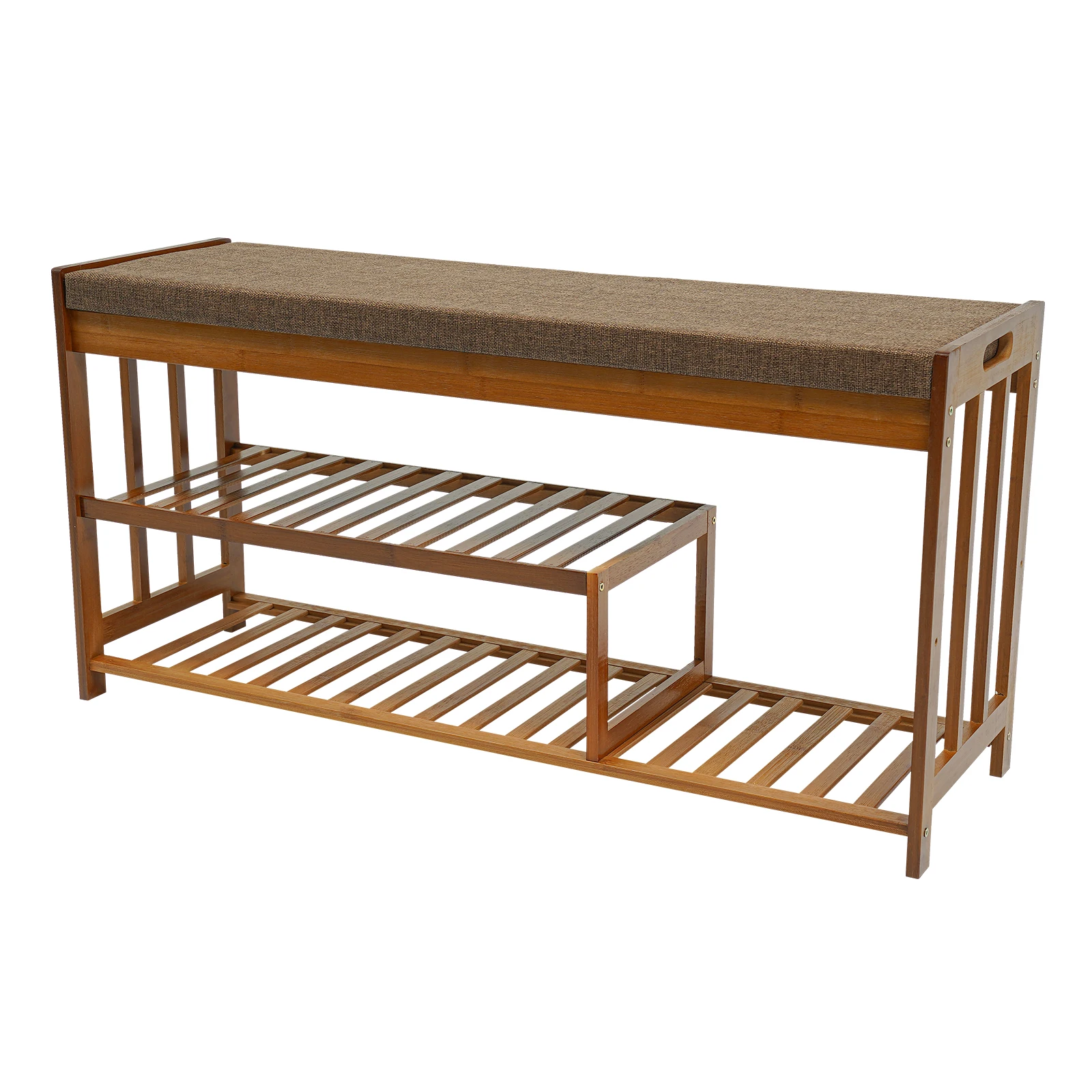
Bedroom Applications
Bedrooms benefit from the versatility of minimalist benches:
Foot-of-Bed Placement
A bench positioned at the foot of the bed (typically matching bed width or slightly narrower) provides convenient seating for dressing. The ideal height matches mattress height (typically 18 inches) for visual continuity.
Dressing Area Seating
Near closets or dressing areas, a bench with storage provides seating during dressing while containing clothing items or accessories. This eliminates the need for a separate chair and hamper.
Window Bench Alternatives
For bedrooms with limited floor space, a simple bench beneath a window creates a peaceful sitting area without the construction requirements of built-in window seats.
Dining Area Space-Savers
Dining zones become more efficient with strategic bench placement:
Chair Replacement Strategy
Replace chairs on one side of a dining table (typically the wall side) with a bench to improve traffic flow. This approach can accommodate more people while reducing the floor space needed for chair clearance.
Built-in Appearance
For maximum space efficiency, consider benches that appear built-in alongside banquettes or against walls. These create a custom look while eliminating wasted space behind seating.
Hideaway Options
Select dining benches that slide completely under tables when not in use. This creates an unobstructed floor plan between meals—particularly valuable in multi-purpose rooms.
Other Small-Space Applications
Creative placement extends bench utility throughout the home:
Bathroom Organization
A water-resistant bench provides both seating and towel storage in bathrooms. Look for materials like teak or coated metals that resist humidity.
Home Office Multi-tasking
In home offices, benches offer guest seating that tucks away when not needed. They also provide temporary work surface expansion during larger projects.
Outdoor Transitions
On small balconies or in compact outdoor areas, weather-resistant benches maximize seating without the bulkiness of traditional outdoor furniture. Space-saving hallway benches often work equally well in these transitional outdoor spaces.
How to Select the Perfect Modern Minimalist Bench
Essential Measurements
Finding the right fit begins with careful measurement:
Space Assessment Method
1. Measure available width, accounting for existing furniture
2. Determine maximum depth that maintains at least 24-30 inches for walkways
3. Consider height in relation to other furniture (typically 16-19 inches for seating)
4. Allow for clearance around the bench (minimum 24 inches for comfortable use)
Door Swing Consideration
Always account for door clearance paths—benches should never interfere with door operation. Mark floor templates with painter’s tape before purchasing to visualize placement.
Proportion Evaluation
The bench should occupy no more than 25-30% of available floor space in very small rooms. For optimal visual balance, maintain similar height relationships with adjacent furniture.
Functionality Assessment
Determine what your bench needs to accomplish:
Primary Purpose
Identify the main function first—seating, storage, display, or surface space—and prioritize features accordingly.
Secondary Benefits
Consider additional uses that would add value. Could your entryway bench also store seasonal items? Might a living room bench occasionally serve dining needs?
Adaptability Factor
Look for designs that will remain functional if your living situation changes. The most valuable pieces adapt to different rooms and purposes over time.
Weight Requirements
For everyday seating, look for benches rated for at least 250-300 pounds. For occasional use or primarily decorative functions, 200 pounds may be sufficient.
Small entryway bench options demonstrate how compact pieces can deliver exceptional functionality despite limited dimensions.
Material Selection Criteria
Choose materials appropriate for your specific situation:
Usage Pattern Matching
High-traffic areas require durable materials like hardwoods, metal, or performance fabrics. Lower-traffic zones allow for more delicate options.
Maintenance Reality Check
Be honest about your willingness to maintain materials. Natural woods require occasional oiling; some fabrics need regular cleaning; metals may show fingerprints that need wiping.
Environmental Considerations
Assess exposure to sunlight (which can fade fabrics and some woods), moisture (potentially damaging to certain woods), and wear patterns in your specific space.
Existing Décor Compatibility
Select materials that either intentionally complement or thoughtfully contrast with your existing furniture. Aim for connection through either color, texture, or form language.
Comfort Considerations
Balance minimalist design with necessary comfort:
Usage Duration
For brief sitting (entryways, dressing areas), minimal padding is sufficient. For longer use (dining, reading spots), consider 2-3 inches of medium-density foam or similar padding.
Upholstery Density
Firmer foams (1.8-2.2 pound density) maintain shape better over time in minimalist designs. Too-soft cushioning collapses quickly and loses its clean lines.
Ergonomic Factors
For frequent use, ensure the bench height allows feet to rest flat on the floor with knees at approximately 90 degrees (typically 17-19 inches for average adults).
Investment Perspective
Approach bench selection as a long-term investment:
Value Analysis
Calculate cost-per-function by dividing the price by the number of problems the bench solves. Multi-functional pieces typically offer better long-term value.
Quality Indicators
Look for solid joinery (dovetail or mortise-and-tenon for wood), reinforced stress points, and quality hardware. These features indicate a piece built to last.
Assembly Evaluation
Pre-assembled benches typically offer better structural integrity than flat-pack versions, though quality ready-to-assemble options with proper hardware can also perform well.
Expert Design Tips for Incorporating Benches into Small Spaces
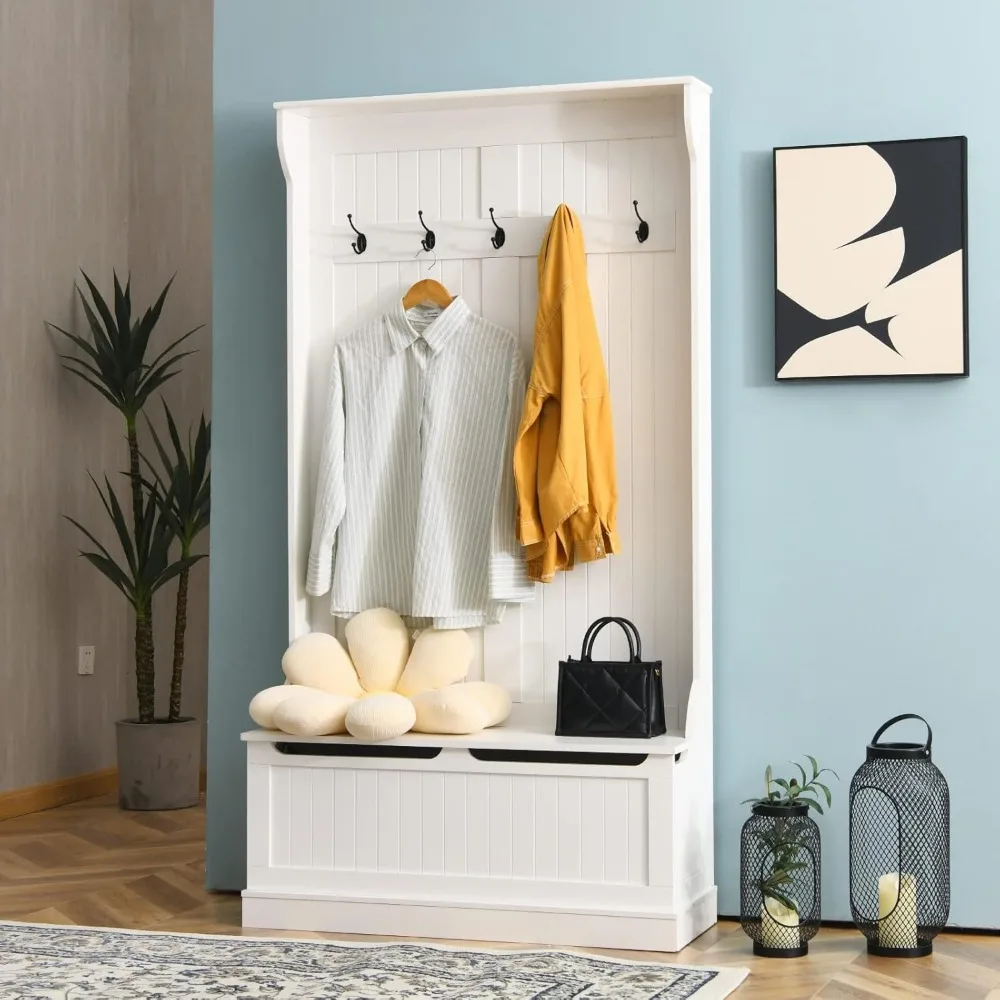
Create Visual Cohesion
Connect your bench to existing décor through at least one shared element—be it material, color, or line quality. For example, if your space features warm wood tones, select a bench with similar wood elements or complementary warm upholstery. This creates harmony without requiring perfect matching.
Master Scale Balancing
Pair substantial benches with more delicate pieces to maintain visual balance. A solid wood bench might be balanced by a lightweight side table or delicate wall art. This prevents any one piece from dominating a small space.
Incorporate Textural Contrast
Add depth through thoughtful texture combinations rather than busy patterns or colors. A smooth-finished wood bench paired with a subtly textured throw pillow creates visual interest without overwhelming the eye.
Embrace Negative Space
Resist the urge to fill every inch around your bench. Maintaining some empty space—particularly beneath floating designs—enhances the sense of openness. The minimalist entryway organization approach shows how strategic emptiness contributes to both function and aesthetic appeal.
Optimize Lighting Placement
Position lighting to complement bench placement. A well-placed wall sconce or table lamp near a bench creates a functional zone while highlighting the piece’s design features. Avoid harsh overhead lighting that creates unflattering shadows.
Practice Restrained Accessorizing
Limit bench accessories to 1-3 items maximum for small spaces. A single textural cushion, a small plant, or a curated stack of books provides personality without clutter. Remember that in minimalist design, each visible item should earn its place.
Apply Color Theory Strategically
Use the bench as either a neutral foundation or a subtle accent piece—never both. A neutral bench (white, black, natural wood, gray) provides versatility with changing décor. Alternatively, a bench in a carefully selected accent color can serve as a focal point amid otherwise neutral surroundings.
Nested Goods’ Top Picks: Premium Minimalist Benches for Small Spaces
Our curated selection features exceptional benches that excel in both form and function for compact living:
The Floating Storage Marvel
This wall-mounted design eliminates floor contact entirely while providing 24 inches of concealed storage within its 36-inch width. The solid oak construction supports 300 pounds despite its floating appearance, and the push-latch mechanism maintains clean lines without visible hardware.
The Multi-Function Master
Our most versatile bench transforms from seating to table to storage in seconds. At just 14 inches deep, it features a rotating top that reveals compartmentalized storage and expands to 28 inches when needed as a work surface. The powder-coated steel frame weighs just 18 pounds for easy repositioning.
The Visual Lightweight
For extremely tight spaces, this bench combines a 3/8-inch tempered glass top with minimalist brushed steel supports. At just 10 inches deep and 42 inches wide, it creates an almost floating appearance while supporting 250 pounds. The transparent surface maximizes visual space in tiny areas.
The Comfort-Forward Option
This bench proves minimalism doesn’t mean discomfort. The 2-inch high-density foam cushion features stain-resistant performance fabric over a slim walnut base. At 16 inches deep and 48 inches wide, it provides comfortable seating without dominating the room.
The Storage Powerhouse
Our top storage bench conceals 8 cubic feet of storage within its 18-inch depth. The gas-lift hinges allow single-handed operation, while the divided interior organizes contents effectively. The removable cushion top can be reupholstered to adapt to changing décor.
Entryway Bench with Back, Modern Entryway Bench, Shoe Bench for Entryway
Price range: $463.13 through $474.44 Select options This product has multiple variants. The options may be chosen on the product pageCorner Entryway Bench, Entryway Bench with Cushion, Modern Entryway Bench, Shoe Bench for Entryway
$476.34 Select options This product has multiple variants. The options may be chosen on the product pageModern Entryway Bench, Wood Entryway Bench, Wood Mudroom Bench
$497.69 Select options This product has multiple variants. The options may be chosen on the product pageEntryway Bench with Cushion, Small Entryway Bench
$466.79 Select options This product has multiple variants. The options may be chosen on the product pageFarmhouse Entryway Bench, Modern Entryway Bench
$1,514.84 Select options This product has multiple variants. The options may be chosen on the product page- Price range: $785.40 through $897.63 Select options This product has multiple variants. The options may be chosen on the product page
The modern entryway bench collection offers additional options that combine practical storage with space-saving dimensions for contemporary homes.
Professional Care Guide for Lasting Performance
Wood Care Essentials
Maintain wooden benches with simple but consistent care:
Regular Cleaning
– Dust weekly with a soft, dry cloth following the wood grain
– Clean spills immediately with a slightly damp cloth, then dry thoroughly
– Use mild soap solutions only when necessary, never harsh chemicals
Humidity Management
– Maintain indoor humidity between 40-50% to prevent wood movement
– Use a humidifier in winter and dehumidifier in summer if needed
– Rotate items displayed on wooden surfaces to prevent uneven aging
Damage Prevention
– Apply furniture wax every 6-12 months to maintain protection
– Use felt pads under objects placed on bench surfaces
– Touch up minor scratches with matching wood repair markers
Metal Maintenance
Keep metal components looking pristine:
Safe Cleaning Approaches
– Wipe chrome and stainless steel with microfiber cloths to prevent scratching
– Use diluted vinegar solution for stubborn fingerprints
– Apply specialized metal cleaners only as directed by manufacturers
Surface Protection
– Address small scratches on powder-coated surfaces with matching touch-up paint
– Apply car wax to chrome or stainless surfaces twice yearly for protection
– Use coasters under beverages to prevent moisture rings
Rust Prevention
– Keep metal frames dry, especially in bathroom or entryway locations
– Apply thin coats of paste wax to unsealed metal for additional protection
– Check and tighten hardware periodically to maintain structural integrity
Upholstery Protection
Extend fabric life with proper care:
Stain Management
– Blot spills immediately with clean, dry cloths (never rub)
– Use fabric-appropriate cleaners for persistent stains
– Consider professional cleaning for deep stains on quality pieces
Regular Maintenance
– Vacuum upholstered surfaces weekly with upholstery attachment
– Rotate removable cushions monthly to ensure even wear
– Keep direct sunlight off fabrics when possible to prevent fading
Refresh Options
– Use fabric freshener sprays between deep cleanings
– Consider slip-covering seasonal options for easy washing
– Professionally clean quality upholstered benches every 1-2 years
General Preservation Tips
Extend the life of any bench with these practices:
Seasonal Assessment
– Tighten any loose hardware at season changes
– Apply appropriate conditioners before winter dryness sets in
– Check structural integrity at key stress points periodically
Weight Distribution
– Place items evenly across storage benches rather than concentrating weight
– Stay within manufacturer weight limits for both seating and storage
– Distribute seated weight evenly rather than sitting on edges
Movement Protection
– Lift rather than drag benches when repositioning
– Use furniture sliders under legs when rearranging is necessary
– Remove heavy items from storage compartments before moving benches
Are Minimalist Benches Worth the Investment for Small Spaces?
When evaluating whether minimalist benches justify their cost for compact living, consider their exceptional space efficiency compared to alternatives. While quality benches may represent a significant initial investment, their cost-per-function often proves remarkably economical when compared to purchasing separate pieces for seating, storage, and surface needs.
The versatility of well-designed minimalist benches delivers particular value as living situations change. Unlike highly specialized furniture that serves singular purposes, these adaptable pieces transition seamlessly between different rooms and functions. A bench that begins in an entryway might later serve a bedroom, dining area, or even office space as needs evolve.
Most compelling is the spatial dividend these pieces pay through their efficient footprints. When compared to traditional seating and storage solutions, minimalist benches typically require 30-40% less floor space while providing comparable functionality—a significant return on investment for those in compact living situations.
Can Minimalist Benches Work in Traditional Home Styles?
Contrary to what their name might suggest, minimalist benches can integrate beautifully into traditional décor when thoughtfully selected. The key lies in material choices that bridge stylistic differences—natural woods with visible grain, brass or bronze hardware details, and textural upholstery fabrics all help minimalist pieces harmonize with traditional surroundings.
Placement strategies also influence successful integration. Positioning a clean-lined bench beneath traditional artwork or between classic side tables creates a pleasing contrast that highlights the best qualities of both styles. This juxtaposition often results in spaces that feel collected over time rather than purchased as matching sets.
Simple modifications can further enhance compatibility. Adding turned wooden legs to an otherwise minimalist bench frame, selecting subtle patterns for upholstery, or incorporating traditional materials like leather can create transitional pieces that respect traditional sensibilities while delivering minimalist benefits.
How Do You Make a Minimalist Bench More Comfortable Without Adding Visual Weight?
Enhancing bench comfort while maintaining visual lightness requires strategic approaches:
Select Thin, Dense Cushions
Choose cushions no thicker than 2-3 inches made from high-density foam (1.8-2.2 pound density). These provide adequate comfort without the bulky appearance of overstuffed options. Tailored edges maintain clean lines while adding necessary padding.
Incorporate Material Transitions
Use material changes to add perceived comfort without bulk. A thin wood bench with a leather seat pad creates tactile warmth without dimensional weight. Similarly, metal frames with tight upholstered tops offer comfort improvement without visual heaviness.
Consider Ergonomic Shaping
Subtle seat contouring—often just a 1/2 inch depression or gentle slope—dramatically improves comfort without altering the bench’s minimalist profile. Look for designs with slightly angled seats or minimal sculpting that accommodates the body naturally.
Implement Removable Solutions
Use roll-up seat pads, tailored bench cushions, or thin throws that can be added when needed and removed when visual clarity is preferred. These temporary comfort solutions maintain design flexibility while addressing practical needs.

